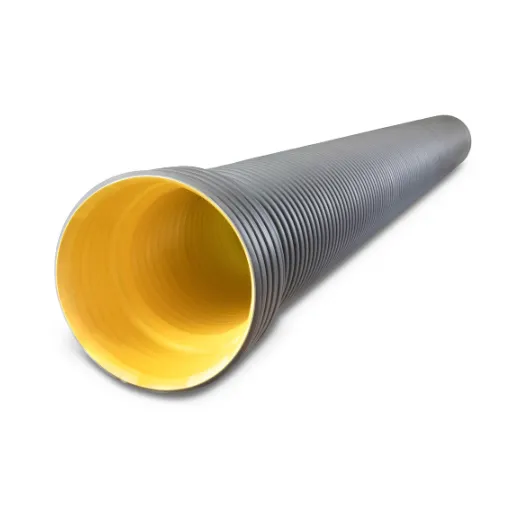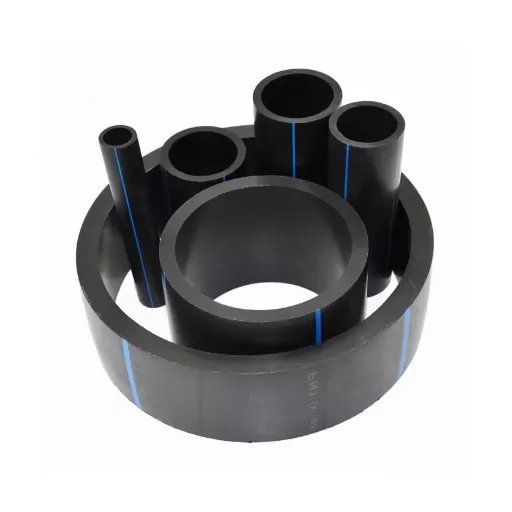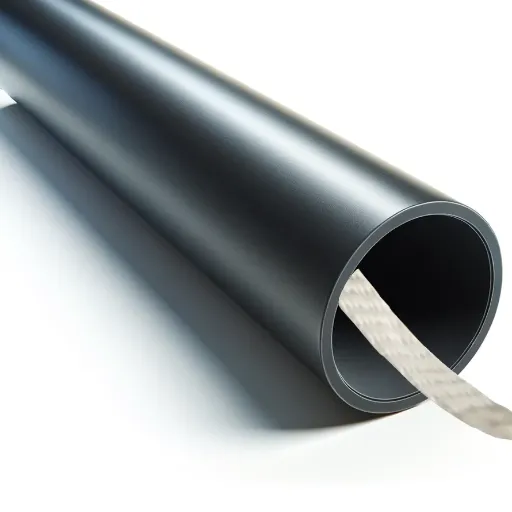Stormwater management is nowadays an important infrastructure component, where the choice of pipe material assumes paramount significance when it comes to achieving efficiency, durability, or being cost-effective. Relative to each other, HP Storm Pipe and HDPE pipe are two of the most argued about types of pipe, each bearing some good and bad points for one to consider. Their different compositions, performance capabilities, and long-range sustainability considerations could mean the difference between successful or unsuccessful realization of a project. This article will thus take a detailed look into the properties, usage, and considerations for the best use of these two popular pipe materials. By the end of this, one will have a complete knowledge of the pros and cons of HP Storm Pipe compared to HDPE, giving them full confidence in deciding whichever they want to incorporate into their design.
Introduction to Pipe Materials
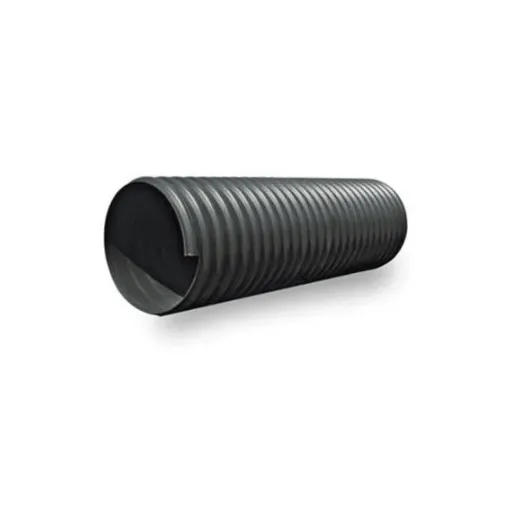
Overview of HP Storm Pipe
The HP Storm Pipe is a high-performance solution for satisfying rigorous stormwater management situations. Its design incorporates dual walls, with the outer wall being corrugated and the inner wall smooth for added strength and efficiency. The pipe consists of polypropylene (PP) material, holding higher abrasion resistance than other pipes with greater resistance to chemical action and environmental stress cracking. This makes it an ideal choice for infrastructure projects requiring durability and long-term working conditions.
Another advantage of HP Storm Pipe is its hydraulic efficiency. The smooth internal surface allows much higher flow velocities than pipes with rougher internal walls, thus reducing clogging potentials and promoting efficient water transport. Another factor favoring ease of handling, its lightweight nature reduces labor costs and speeds up project time. It can take large volumes of water into discharge; hence, it is more suitable for stormwater drainage, detention systems, and culverts.
Another factor in its favor is that it brings environmental benefits. HP Storm Pipe is recyclable, and frequently, construction is undertaken with sustainability in mind, adhering to pertinent environmental standards. Meanwhile, the material has a good strength-to-weight ratio, and provides for both structural and hydraulic needs where pipe laying is being done under punishing conditions of heavy loads or having heavy traffic. Essentially, HP Storm Pipe fosters an innovative new way of stormwater management that compromises performance with affordability and environmental considerations.
Overview of HDPE Pipes
The HDPE pipe possesses exceptional durability, flexibility, and corrosive resistance; thus, these pipes find usage in the larger spectrum of applications. HDPE pipes have a long service life because of their chemical stability and high resistance to environmental stress cracking, even under very harsh conditions. Also, a smooth interior of HDPE pipes decreases leakage to a great extent, thus leading to higher efficiencies of water and gas distribution systems.
Further, HDPE pipes are light in weight yet strong, making it easier to handle, transport, and install without the need for heavy machinery, thereby reducing labor costs and installation times compared to steel or concrete pipes. This flexibility allows these pipes to be laid even in difficult terrains such as earthquake-prone or soil-moving areas without jeopardizing structural integrity.
Environmentally speaking, HDPE pipes are a sustainable option. They are fully recyclable, thereby helping to reduce environmental impact, while their manufacture demands less energy compared to that of traditional pipe materials. With low maintenance requirements over the long haul and minimal repair needs, HDPE pipes are cost-effective for both public and private infrastructure projects-promoting environmental responsibility.
Importance of Choosing the Right Pipe for Drainage Systems
When it comes to drainage systems, the correct piping must be used so that the system is durable, efficient, and a long-term investment. The pipe specifications directly relate to the ability of the system to accommodate water flow, resist blockages, and, give due consideration to environmental conditions. Improper pipe selection because of variations in soil type and water pressure, or the application of improper strength properties for resisting environmental loadings, may lead to premature failures.
Another important consideration is material selection. For instance, pipes made of HDPE are acknowledged for the benevolence of their flexibility, ant-corrosion qualities, resistance against extreme temperatures, and ability to withstand external loads. Concrete pipes, meanwhile, are suitable for applications where heavy usage is anticipated because of strength and longevity, while PVC pipes stand as the economical and light-weight alternative in medium applications. Depending on what the drainage system calls for, each material offers specific advantages.
Good installation is just as important as the choice of the piping solution. Even the very best materials may fail if installed incorrectly or if environmental factors are not addressed-for instance, shifting soil or high water tabl-es. The engineers and practitioners shall perform a full assessment of the project requirements by consulting reliable standards and guidelines to ensure optimum performance of the drainage system over time. Taking informed decisions shall thereby curtail maintenance costs, meet failures, and enable efficient management of water.
Key Differences Between HP Pipe and HDPE
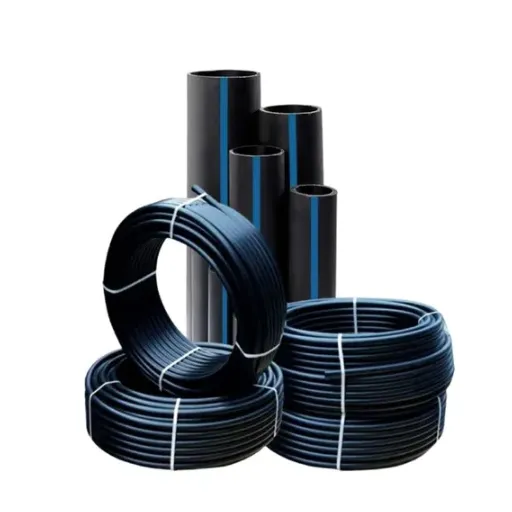
Material Properties of HP Pipe vs HDPE
HP pipes are made for high-pressure applications of enhanced stiffness and strength, while HDPE pipes are light, flexible, corrosion-resistant, and cheap for regular applications.
| Aspect | HP Pipe | HDPE Pipe |
|---|---|---|
| Pressure | High | Moderate |
| Flexibility | Low | High |
| Durability | Superior | Long-lasting |
| Corrosion | Moderate | Resistant |
| Weight | Heavy | Lightweight |
| Cost | Higher | Lower |
| Installation | Complex | Easy |
| Applications | Industrial | General |
Durability and Lifespan of HP Storm Pipe and HDPE
Durability and life span of HP storm pipe against HDPE do matter while selecting materials for stormwater drainage. Polypropylene-based material is used in the construction of HP storm pipe to harbor high impact and resist chemical corrosion. It stands well under heavy load and stress, thus suitable for large stormwater drainage systems. Usually, an HP storm pipe has a life beyond 75 years under normal conditions with proper installation and maintenance.
In contrast, HDPE pipes are known for their flexibility and resistance to environmental stress cracking. They can withstand temperature variations over a wide range and are abrasive resistant, in addition to being highly chemically resistant. HDPE pipes are considered favorable in those instances that may demand absolute leak-proof performance, such as pressurized systems, because the joints are fused without seams. Like HP pipes, HDPE pipes have almost the same life span of over 75 years if properly installed and handled, hence being a dependable long-term solution.
Both these pipe materials provide excellent durability. The decision between HP and HDPE generally depends on the requirements of the worksite. Soil condition, load-bearing capacity likely to be posed, exposure to UV radiation, and environmental considerations in general should all come into play during decision-making. A change in the manufacturing process and material technologies, on the other hand, has brought about an improvement in the performance characteristics of HP and HDPE pipes, making them hold infrastructural demands with very little maintenance through their service life.
Performance in Different Environmental Conditions
Currently, among factors affecting piping system development in changing environmental conditions are temperature fluctuations, chemical exposure, and external mechanical stresses. The durability of HP and HDPE pipes has been proven by tests conducted under different environments. HDPE pipes are known to withstand extreme temperature ranges. These pipes do their job in times of cold temperatures, where otherwise brittleness would compromise the material performance, and times of high temperature, since their thermal expansion is minimal due to the low coefficient of thermal expansion of HDPE.
This inert resistance makes HDPE pipes excellent in industrial applications or corrosive soil conditions, whereas HP pipes utilize special polymer blends to resist deformation or failure arising out of high-pressure systems. Furthermore, UV stabilization treatments for the materials rendered them resistant to degradation from prolonged sun exposure, a major consideration for above-ground installations.
Field data substantiate their use in challenging environments, including in heavy earthquake zones, where rigid materials fail, while HDPE pipes resist damage to a certain extent by flexing and absorbing ground movement. Jointing technology has also advanced greatly, with heat fusion or electrofusion making these systems up to their promises of being leak-proof in operating conditions worldwide.
Cost Factors in Selecting Pipe Materials
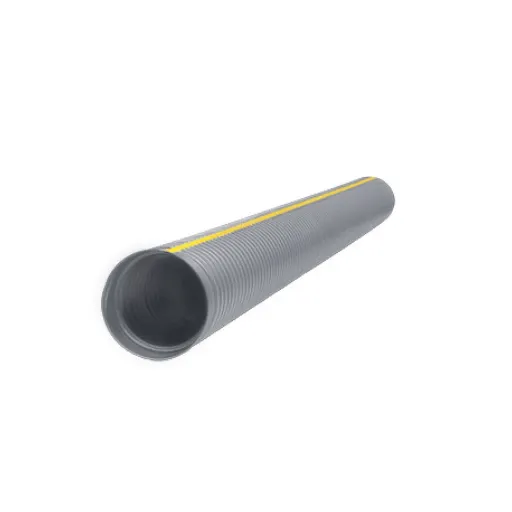
Initial Installation Costs of HP Pipe vs HDPE
Initial installation costs for HP pipes are higher primarily due to materials and labor. On the other hand, HDPE pipes save costs because they are installed easily and quickly.
| Aspect | HP Pipe | HDPE Pipe |
|---|---|---|
| Initial Cost | Higher | Lower |
| Labor | Intensive | Minimal |
| Installation | Complex | Easy |
| Weight | Heavy | Light |
| Flexibility | Low | High |
| Durability | Superior | Long-lasting |
Maintenance and Long-term Cost Effectiveness
Key factors considered by engineers in choosing construction materials during maintenance or in long-term cost efficacy of piping systems include durability and resistance to HDPE pipes against various environmental stressors, not least corrosion under chemicals in the environment. The first benefit being corrosion-free renders less need for repairs by mitigation against highly corrosive environments, like in highly chemical exposure or corrosive soils. Such longevity of these systems ensures that they are viable while operationally cheaper than steel or concrete.
The flexibility of the material can further alleviate stresses incurred during installation and operation and thus diminish the possibilities of structural fatigue appearing in the future. With modern joining techniques such as electrofusion joining, provide a truly seamless and leak-proof system that, in turn, provide the network with an even greater longevity while simultaneously minimizing water loss in critical applications.
These types of analyses display that the conventional cost factors of HP or HDPE piping might roughly seem to compare with or maybe ever fall a shade higher than those of a common alternative. But the seriously lowered maintenance requirements and extended operational lifespan more than pay back initial costs. Various case studies show that HDPE systems stand full operational efficiency for full decades under regular working conditions, hence asserting their long-term financial potentiality for industrial, municipal, and residential applications.
Cost Analysis for Different Applications
When checking cost-effectiveness across the spectrum of applications, HDPE piping turns out to be a versatile option serving industrial, municipal, and residential infrastructures. In industrial systems, considered stronger chemical resistance offers corrosion opportunities for fewer replacements and repairs. This becomes all the more important for chemical processing plants and wastewater management facilities where exposure to aggressive substances normally expedited wear of alternative materials such as metal or PVC.
On the municipal scale, HDPE offers higher durability and better joint integrity compared with conventional pipe in service. Heat-fused joints in HDPE systems prevent leaks, resulting in reduced water loss and, likewise, maintenance costs being a particular advantage in large water distribution networks. Research findings confirm that some municipalities employing HDPE have recorded a decrease between 40% and 60% in water leakage, thus directly impacting the conservation of water resources and operational costs.
In the residential sector, HDPE pipes are preferred for their flexibility and lightness, lowering shipping and installation costs. It is also highly resistant to freezing and cracking, easing repairs in the long run that may follow the seasonal failure of pipes.
Less maintenance time means a longer life cycle, typically 50-100 years, with HDPE making a generally better choice through different environmental conditions. These savings, accumulated over time, justify HDPE as an investment compared to traditional materials, both from a perspective of first costs in projects and during the entire life cycle of the asset from operation.
Applications of HP Storm Pipe and HDPE

Common Uses and Best Fit for Each Pipe Material
Due to their properties and engineering of design, high-density polyethylene pipes and storm pipes have an array of different applications. Below is a detailed assessment of the best-fit application for each material:
HDPE Pipes
HDPE pipes are used chiefly in applications requiring high durability, environmental resistance, and flexibility. The main applications include municipal potable water systems, sanitation sewer systems, storm sewer installations, and industrial fluid transfer systems. Against corrosion and damage by UV rays, HDPE is very well suited for outdoor projects or those projects that will exist for a long time under harsh environmental conditions. Also, HDPE pipes are well-built to handle structural challenges involving high pressure-thus suitable for force main sewer projects or agricultural irrigation systems.
HP Storm Pipes
HP Storm pipes have been designed with attention to detail and efficiency for all facets of stormwater management pertaining to civil infrastructure works. Generally, these pipes are great for large-scale storm drainage systems, retention, or detention facilities, and roadway culverts. When designed with advanced corrugation, HP Storm pipes can be particularly advantageous, having a greater load capacity and hydraulic efficiency, making them essential for highways or areas where structural stability is important. Because of its lightweight nature, these pipes are easier to install, and therefore installation requires less labor and saves the overall cost of the project.
Designers and engineers make sure that a pipe material is consistent with the needs of a project, e.g., load, environment, and life of the system in order to merit maximum operational efficiency and sustainability. On the contrary, the advances in materials science should recoil HDPE and HP Storm from the leading edge of pipeline infrastructure solutions as standards and environmental regulations keep on changing.
Case Studies Highlighting Successful Implementations
Case Study 1: Urban Drainage System Upgrade With HDPE Pipes
An important metropolitan region in the northeastern United States could suffer from recurrent urban flooding due to an obsolete drainage system and high maintenance costs. Engineers proposed the replacement of aging concrete stormwater pipes with HDPE pipes, the name standing for high-density polyethylene, since these do not corrode easily, are light in weight, and are easy to install. A phase-wise implementation was carried out over three months, allowing uninterrupted functioning of city operations. After the installation process, inspection results pointed toward a 30 percent drop in maintenance costs, with much better flow efficiency, which greatly helped in reducing flood risks in the subsequent wet season.
Case Study 2: Industrial Facility Retrofit Using HP Storm Pipes
Midwest manufacturers considered implementing a retrofit of the stormwater management system to meet the stringent environmental regulations. The engineers selected HP Storm pipes because of their excellent stiffness-to-weight ratio, structural strength, and water-tight joint performance. A bespoke layout was designed to carry the heavy loads imposed by vehicles within the plant. Following installation, the plant recorded an increase of 50% in system reliability and compliance rates and low maintenance cost for the long term. It was clear from this that HP Storm pipes could be adapted to the industrial-grade requirements.
Case Study 3: Coastal Infrastructure Resilience Project
Because of saltwater exposure and the heavier seasonal rains caused due to climate change, this coastal town in the Pacific Northwest had to nurture its pipeline infrastructure to harsh environmental conditions. HDPE pipes were the perfect choice due to their chemical and mechanical properties, granted they are highly resistant to chemicals and extremely flexible, allowing seamless placement on a very challenging terrain. The town witnessed significantly reduced degradation rates of the system after being in operation for five years, and the robust option fulfilled long-term sustainability goals by lessening repair frequency.
The above cases have shown very versatile and practical uses for HDPE and HP Storm pipes in very different environments. Their performance has been proven to provide results day in and out, giving the infrastructure development arena a face of modern engineering and ecological thought.
Recommendations for Specific Project Needs
Various technical factors shall be checked and considered when searching for the best piping solution for a project. HDPE pipes are recommended, given that these pipes valued corrosion resistance, flexibility, and durability over time. They withstand very high tensile loads and in severe conditions, rendering them useful for water distribution systems, sewer networks, and industrial processes where chemicals are frequently applied.
Other than that, the HP Storm pipes are most applicable to large-capacity stormwater systems. Due to its dual-wall structure, the pipe can provide maximum stiffness and load resistance, suitable for heavy traffic loading or building soil conditions. The precise joints of the pipe are guaranteed to provide a watertight seal, thereby reducing the risks of infiltration and exfiltration, which are very important in environmental compliance.
Several factors must be considered, including soil and load conditions, hydraulic requirements, and anticipated maintenance needs, when selecting one method or the other for a specific project. By combining this knowledge with an advanced design approach, engineers can substantially guarantee the infrastructure will function to the highest standards of operation and sustainability.
Conclusion: Which Pipe is Best for Your Project?
Summary of Key Takeaways
The selection of the right pipe materials for a given application depends on several key factors that ensure high-performance output and long-term assurance. From a technical perspective involving structural characteristics, durability, and environmental stress analysis, every pipe type presents a set of advantages. For instance, where there is a required load, heavy load application reinforced concrete pipes due to their high compressive strength. Whereas, HDPE Pipes are mainly wanted for their chemical resistance and flexibility, especially where high corrosion comes into play.
The life-cycle cost criteria are equally essential and extend far beyond the initial capital investment. Maintenance, repair, and replacement costs can impact heavily on the actual cost of owning an item. For example, steel pipes may have higher tensile strength, but being prone to corrosion, they may incur maintenance costs as time goes on unless they are appropriately coated or treated. Advanced modeling and simulation techniques are now readily available to aid engineers in anticipating the performance of materials under different operational loads and environmental conditions, and to prioritize their decisions accordingly.
With the integration of input data introduced during project stages, the latest standards, and high-performance mathematical models, the very choice of materials gains an optimization process in favor of life expectancy and sustainability. Such global decision criteria go an extra mile to avoid failure risk and comply with existing building regulations gradually imposing requirements on infrastructure projects faced with new engineering challenges. Successful application of these principles stressed the importance of a panoptic approach on a hard data basis in designing resilient and efficient systems.
Final Thoughts on Choosing Between HP Pipe and HDPE
One should consider the project requirements, scale, and environmental conditions when selecting between HP pipe and HDPE. The HP pipe is a top-class solution for use in high-load or heavy-duty infrastructure projects. It is generally given to those applications that require its ability to bear great weight without compromising strength in building roadways, industrial sites, or other high-traffic areas.
It, however, positions HDPE as the more flexible and chemically resistant option with a higher ability to resist aging, factors that become relevant when projects require adaptability or resilience under corrosive conditions. The lightness and tough nature of the product guarantee easier transportation and installation, reducing operational costs while maintaining a satisfactory level of performance. HDPE emerges as the preferred material when it concerns underground utilities, water conveyance, or acid soils in the environment.
Ultimately, my decision relies on detailed project analysis, including site conditions, load requirements, and lifecycle considerations. Incorporating data on initial costs and long-term performance metric guarantees that the chosen material fits within the project objectives and maximizes efficiency and sustainability. Each material, HP pipe or HDPE, serves different purposes, and the final selection is a delicate balance between technical considerations and practical constraints.
Future Trends in Pipe Material Technology
As the demand for sustainability, efficiency, and cost-effectiveness in infrastructures increases, developments in pipe materials are being brought around in therapy to these needs. New materials and processes are thus oriented toward increased durability while lessening environmental consideration. Composite materials, for instance, which are lightweight yet strong with the added feature of being corrosion-resistant, are gaining importance in industrial sectors where long service life in an adverse environment is a must. Conversely, research on bio-based polymers continues to find out if they can be an alternative to conventional thermoplastics, with emphasis placed on renewable resources to reduce carbon footprints.
Smart pipe technology represents yet one other major trend into the future. Dry manufactured with sensors and IoT connectivity, these systems are intended to monitor flow rates, pressure levels, and any possible defects in real-time. The advantage is the predictive maintenance that ends with minimum downtime and enhanced operational efficiency. Also, with the advancing 3-D printing process, the limits of customization are being pushed, thereby allowing the pipe systems to be produced exactly customized to any given unique project while minimizing material waste.
In general, intersecting innovation that combines materials science, environmental standards, and digital technologies is gradually redefining the possibilities in pipe engineering and infrastructure development as the sector evolves.
References
- Evaluation of Backfill Materials and Installation Methods for HDPE Pipes
This research focuses on specifications for large-diameter HDPE pipes in construction projects. - Plastic Pipe for Highway Construction – Phase 2
A detailed investigation into the use of thermoplastic pipes, including HDPE, for highway construction. - Chapter 7 – Erosion and Sediment Control
Discusses stormwater management and the use of HDPE pipes in erosion and sediment control. - ADS HP Storm Pipe Specification
This document outlines the specifications for ADS HP Storm pipes in storm sewer drainage applications. - Stormwater Policies and Standards Manual
Covers alternative pipe material requirements, including HDPE, for storm drain systems.
Frequently Asked Questions (FAQ)
Q: What is the main difference between HP storm pipe and HDPE?
A: In regard to material properties and their applications, HP storm pipe and HDPE differ mainly. High-performance polypropylene is used for the design of HP storm pipes, which provide more stiffness to the pipe and its durability in gravity-flow storm drainage applications. HDPE pipes, on the other hand, are usually more flexible and light in weight, and they may be used for various drainage applications but would not provide adequate stiffness in those that require it.
Q: Which pipe becomes cheaper to buy for storm drainage applications?
A: Due to its advanced polypropylene resin technology and performance features that are superior to others, an HP storm pipe might cost more to install. But, considering the long-term advantages and reduced maintenance, an HP storm pipe can turn out to be cheaper for some high-profile drainage applications.
Q: Are HP storm pipes suitable for airfield drainage applications?
A: Yes, HP storm pipes meet ASTM standards and may be used under airfield pavements. These pipes are corrosion resistant and are the best choice for storm drainage in section 33 40 00 where maximum durability is required.
Q: How do HP storm pipes compare with corrugated pipes?
A: HP storm pipes generally have smooth interior walls, which help achieve better flow and minimize the accumulation of sediment or debris as compared with the corrugated pipes. The latter might be a bit more lightweight and easy to handle, while the HP storm pipes offer more pipe stiffness and durability for applications where they are truly needed.
Q: Why is advanced polypropylene resin used to manufacture HP storm pipes?
A: A very specific grade of polypropylene-copolymer resin technology creates a superior performance-resistant corrosion cast HP storm-water pipe, which is ideal for installations exposed to harsh environments for an extended period. The resistance to certain structural deformations also requires the resin to develop pipes with more stiffness, a requirement that is crucial for some gravity-flow storm drainage set-ups.
Q: Can HP storm pipes efficiently carry stormwater runoff?
A: Indeed; HP storm pipes are set up explicitly to generate efficient stormwater runoff. Their superior performance profile design affords them the ability to cope collectively with the large volumes of water, hence affording them the utility of storm drains and culverts in different applications.
Q: What requirements or specifications will pipes need to fulfill with respect to efficient storm drainage?
A: For storm drainage applications, pipes are to be manufactured to ASTM F2881 or AASHTO M330 standards. Thereby ensuring the pipes have adequate structural integrity and performance attributes for water management in storm drainage systems.
Q: Are HP storm pipes more environmentally friendly than HDPE pipes?
A: Usually considered to have less impact, HP storm pipes being made of high-performance polypropylene are generally regarded as environmentally friendly due to increased durability against wear and deterioration compared to HDPE making for longer life and fewer replacements, thus contributing to a more sustainable drainage solution.
Q: What kind of pipe will be used for projects requiring higher pipe stiffness?
A: Use HP storm pipes for jobs where pipe stiffness is paramount. Their design and inherent material properties provide the structural integrity required by the more demanding applications that must reliably perform in gravity-flow storm drainage conditions.
Q: How do I choose between HP storm pipe and HDPE for my project?
A: Selection between HP storm pipe and HDPE must be specifically based on project requirements such as greater pipe stiffness, drainage application, long-term costs, and environmental conditions. Consult storm drainage application engineers for advice in your selection.
Making the right choice between HP Storm Pipe and HDPE requires careful consideration of your project’s specific needs, environmental conditions, and long-term goals. Both materials offer exceptional performance characteristics that can contribute to successful infrastructure development.



